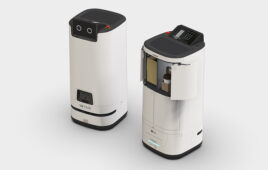|
Listen to this article
|

NVIDIA and AMD said on Wednesday that the United States government has ordered them to halt exports of certain AI chipsets to China, which is the world’s second-largest economy. Both companies now require licenses for the sale of AI chipsets to China.
The restrictions cover NVIDIA’s A100 and upcoming H100 integrated circuits, and any systems that include them. AMD said the new license requirements will stop its MI250 chips from being exported to China. However, it said it doesn’t foresee this having a material impact on its business. NVIDIA, however, said this move could result in a loss of $400 million in sales this year.
NVIDIA said U.S. officials told it the new rule “will address the risk that products may be used in, or diverted to, a ‘military end use’ or ‘military end user’ in China.” NVIDIA has development and manufacturing within China. Today it announced the export restrictions do not cover the movement of materials related to the development and manufacturing of the H100 chip. NVIDIA confirmed it will be allowed to fulfill orders of the A100 and complete development of its H100 chip through the company’s Hong Kong facility until Sept. 1, 2023.
“We are working with our customers in China to satisfy their planned or future purchases with alternative products and may seek licenses where replacements aren’t sufficient,” NVIDIA said in a statement. “The only current products that the new licensing requirement applies to are A100, H100 and systems such as DGX that include them.”
The NVIDIA A100 and H100 chipsets are Tensor Core GPUs, designed to process enterprise workloads. NVIDIA’s ninth-generation H100 data center GPU features 80 billion transistors. Built on the Hopper architecture, NVIDIA’s new accelerator is advertised as “the world’s largest and most powerful accelerator,” making it ideal for intensive HPC and AI simulations.
The NVIDIA A100 Tensor Core GPU, which was launched in 2020, was the highest-performing elastic data center for artificial intelligence (AI), data analytics (DA), and high-performance computing (HPC) at the time. The Ampere architecture provides up to 20X higher performance than its predecessors.
For AMD, the restrictions cover the Instinct MI250 Accelerator. Accelerators from AMD’s latest Instinct MI200 family are designed to fuel discoveries in mainstream servers and supercomputers, including some of the largest exascale systems, so that researchers may take on problems as diverse as climate change and vaccine development.
Impact on Chinese robotics companies
There are a number of robotic applications that leverage AI to operate effectively. This includes tasks like vision guidance for industrial robots for bin picking, sorting and palletizing. For autonomous mobile robots, AI is used for perception and obstacle avoidance. Within the warehouse, many suppliers are employing AI to optimize the daily workflow, inventory placement and both goods-to-person and person-to-goods operations.
The class of GPUs coming under export controls is arguably the most powerful on the market. The chips in question are designed to be deployed in data center applications and embedded in enterprise-class servers. The likely reason for the export ban is that the US government wants to keep these chips from being diverted to other (i.e. military) applications.
These servers require lots of power, cooling and high-speed network connections to do their work. As a result, according to multiple sources The Robot Report spoke to, these specific chips are not likely to be engineered into embedded systems like a robot controller or an autonomous mobile robot controller. However, these GPUs are important for training deep learning or reinforcement learning models for a robotic application. Model training is computationally intensive and these chips help to accelerate that task.
Typically, model training is done using a set of servers in a data center, accessed over the network. Amazon, Google and Microsoft deploy thousands of these types of servers to support their web services. Many AMR, drone and robot manufacturers around the world are deploying the NVIDIA Jetson as an embedded controller, and this class of technology is not included in any restrictions.
A source said if the NVIDIA block “is only on Ampere and Hopper, then that isn’t as severe as many (companies) still use the Jetson Xavier, which uses the predecessor to Ampere and works quite well.” However, the source added if future bans impact these lower-performance GPUs, then Chinese robotics companies could be in bad shape and could have to find alternative solutions.
Related impacts of US policy decisions on robotics
US policy has impacted Chinese robotics manufacturers in other ways recently.
In November 2021, the SPAC merger for autonomous trucking company Plus was blocked because of “developments in the regulatory environment outside of the United States.” At the time the story was reported, Plus had a partnership with China’s FAW, which is the world’s largest heavy truck manufacturer. Plus was working with some of the largest fleets in the US and China to pilot commercial freight operations.
A source told The Robot Report the US military is rejecting exoskeletons where the only part that was made in China is the cloth around them.
Chinese company HIK Robotics has been banned from selling in the US due in part to the use of its cameras and vision technology by the Chinese government for surveillance operations. As a result, the company is focusing on sales in China and Korea.






Tell Us What You Think!